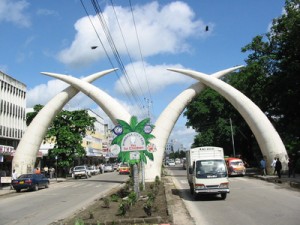Mombasa History

Mombasa was and still is an important port. By the 15th century, trade routes had been established with China, Persia, and India. Mombasa is the largest port on the coast of East Africa. It serves the countries of Rwanda Burundi, Uganda, Eastern Zaire, and Kenya. The population is fairly diverse but still consists mostly of those of African descent.
Mombasa has dealt with its share of foreign invaders over the years. Many have tried to lay claim to the city including the Portuguese, Omanis, and British forces. The British ruled Mombasa for a time starting in the late 19th century. They leased part of the coast to the Sultan of Zanzibar and it belonged to Zanzibar until Mombasa ceded to Kenya in 1963.
In 1901, the British completed a railway connecting Uganda and Mombasa, which solidified the importance of the city as a vital African port. Mombasa remains one of Africa’s main links to the rest of the world. The city (built on an island) is surrounded by a natural harbor. Its natural beauty draws tourists from around the world.
One of Mombasa’s most significant historical attractions is Fort Jesus. It is built at the entrance to the harbor. It was built in 1593 by the Portuguese to defend against local enemies and incoming warships. One can tour the remains of the fort and a small museum houses a variety of relics from the time period. In the northwestern corner of the fort you will find the Omani House which provides tourists a view of Swahili life as well as gorgeous views of Old Town.
Even though the history dates back centuries, most of the buildings and houses in Old Town are no more than 100 years old. They were modeled after ancient Swahili architecture to keep the city close to its historical roots. You will see intricately carved doors and frames showing off the creativity of the Swahili culture. You will see Muslim influence in the balcony construction, particularly in the intricate latticework. This is a beautiful area of Mombasa that every tourist should visit.
The center of Mombasa is more modern in design. The heart of the city is at the intersection of four major roads. Each of these is lined with shops, stalls, and local artists. Here is where you will find the city’s most famous landmark: the crossed tusks. These were erected into a ceremonial arch to commemorate Elizabeth II’s coronation in 1953.
To experience the culture of the city, both the Modern city center and Old Town are perfect places to explore. You can use a Tuk Tuk to drive around looking at the sights or take it slower by walking through both areas and talking with the locals.


 KES 14,350 PPS
KES 14,350 PPS

 KES 12,600 PPS
KES 12,600 PPS 



